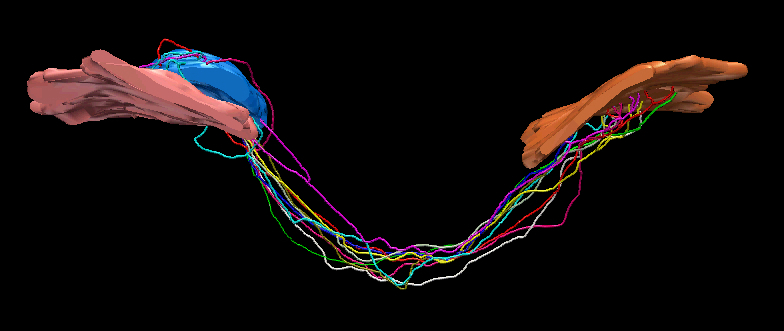
Neurolucida Helps Scientists Better Understand Sound Localization
Birds and mammals hear binaurally, hearing sounds through two ears. Binaural hearing allows them to determine which direction a sound came from—a pivotal element of survival.
Doctors Armin H. Seidl, Edwin W. Rubel, and David M. Harris of Seattle’s Virginia Merrill Bloedel Hearing Research Center at the University of Washington recently published a study in the Journal of Neuroscience that may encourage scientists to think in new ways about the sound localization process.
The research involved the sectioning and 3D reconstruction of the brains and brainstems of over 50 white leghorn chickens. By analyzing the part of the brain responsible for computing the interaural time difference (ITD)—the difference in the arrival time of a sound between two ears—the scientists determined that the length of the axons in the chicken sound localization circuit alone cannot compensate for external ITDs, as previously thought. Instead, it seems that the axon diameter and the distances between Nodes of Ranvier are also vital to the process.
Dr. Seidl explained that his team used Neurolucida in the study for two reasons:
“Neurolucida allowed us to trace and reconstruct labeled axon over several 3D images. Hence, we could record labeled axons at high magnification and stitch them together over several Z-stacks of images. Pivotal was also the possibility of introducing branch points to the 3D trace.”
“Neurolocida Explorer allowed us to measure the reconstructed axon and to measure specific segments, i.e., from a certain branch point or to a certain ending.”
“We found Neurolucida very user friendly and we always got great help from your online support department. We are planning on using it in the future,” Seidl said.
Read “Mechanisms for Adjusting Interaural Time Differences to Achieve Binaural Coincidence Detection” at The Journal of Neuroscience Online.
{Image: Nuclei outlined with the contour function in Neurolucida. Courtesy of Dr. Armin Seidl}
Armin H. Seidl, Edwin W. Rubel, and David M. Harris (2010), “Mechanisms for Adjusting Interaural Time Differences to Achieve Binaural Coincidence Detection.” Journal of Neuroscience, 30(1):70-80



